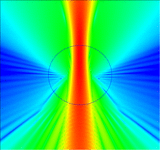

The Ray Tracing path uses less complex logic for effects in Ray Tracing, such as RTGI and Reflections where textures, normals, and roughness can be come an expensive added cost.ĭuring the ray tracing shadow computation, a small scattering simulation is run to compute the expected volumetric scattering distance, through the medium, to the shadow-casting light. In this example, the Normal logic path renders as seen in the scene. This is a global change that affects all ray tracing effects. Use this node to replace entire parts of your Material logic to lower the cost of features like RTGI, RT Reflections, and RT Translucency with less complex logic. Use the console command r.RayTracing.EnableMaterials to test performance impact.

A value of 0 will disable all effect, 1 will enable all effects, and -1 will use the previous settings enabled for your project.Ĭomplex Materials can affect performance of Ray Tracing features. Use the command r.raytracing.ForceAllRayTracingEffects to quickly enable and disable Ray Tracing in your scene. However, when compared to undenoised multiple samples per pixel, the results are consistent.Īlso, keep in mind that the Denoiser supports up to four samples per pixel, which improves the quality and more closely matches the undenoised multiple samples per pixel result. The denoised single sample per pixel will not be perfect due to information loss. The Final Gather method also requires the following settings to be used in the Post Process Volume for it to work effectively: This rejection crieteria defaults to 10 units. It is currently based on a world distance measured from the original shading point. To aid in suppressing temporal ghosting artifacts, you can use the following command to modify the world space rejection criteria. The new method trades that emulation for performance, which introduces some limitations it's currently limited to a single bounce of indirect diffuse GI, and reprojection of the previous frame GI sample data is susceptible to ghosting.Įnable the Final Gather method from the Ray Tracing Global Illumination section of a Post Process Volume using the Types dropdown selection. The original RTGI algorithm intends to emulate the Path Tracer's ground truth reference and is similar in execution of the path tracing result. During the second phase, the algorithm attempts to reconnect to the shading point history, amortizing the cost of the method. A history of up to 16 shading point samples are stored in screen space during this phase. The first phase distributes shading points-similarly to the original RTGI method-but at a fixed rate of one sample per-pixel. This is currently an experimental RTGI method.Īn alternative ray tracing based global illumination global illumination method using a final gather-based technique has been developed that seeks to give back some runtime performance.
#Ray tracing refraction vector code Offline#
It works similarly to offline renderers by gathering samples over time and, in its current state, is useful for generating ground truth renders of your scene rather than final pixels.įor additional information, see the Path Tracer.įollow these steps to enable ray tracing support in your project. The Path Tracer is an unbiased, physically based path tracer that is good for rendering reference images of your scene. It uses a low number of samples coupled with a denoising algorithm that is perceptually close to the ground truth results of the Path Tracer. The Ray Tracer enables ray traced results for shadows, AO, reflections, translucency and global illumination all happening in real-time within your project. Ray tracing in UE4 is composed of two techniques:Ī hybrid Ray Tracer that couples ray tracing capabilities with our existing raster effects.Ī Path Tracer for generating reference renders. Real-time rendering of Ray Tracing features in the Archviz Interior sample project available on the Epic Games Launcher. Ray tracing effects look more natural, producing soft shadowing for lights, accurate ambient occlusion (AO), interactive global illumination, reflections and more. The power of Unreal Engine 4 (UE4) combined with Real-Time Ray Tracing (RTRT) makes it possible to create interactive experiences with subtle lighting effects comparable with many offline renderers in real time. For architectural visualization companies, ray tracing has meant creating beautiful renders for the automotive industry or showing what a densely-filled house or office complex could look like when complete all while achieving realistic-looking results. For film and television, it can take many hours or even days to render out high-quality image sequences, but the final result can create real-life 3D content that can blend seamlessly with real-life ones. Ray tracing techniques have long been used in film, television, and visualization for rendering photo-realistic images for a long time but required powerful computers and time to render each image or frame.


 0 kommentar(er)
0 kommentar(er)
